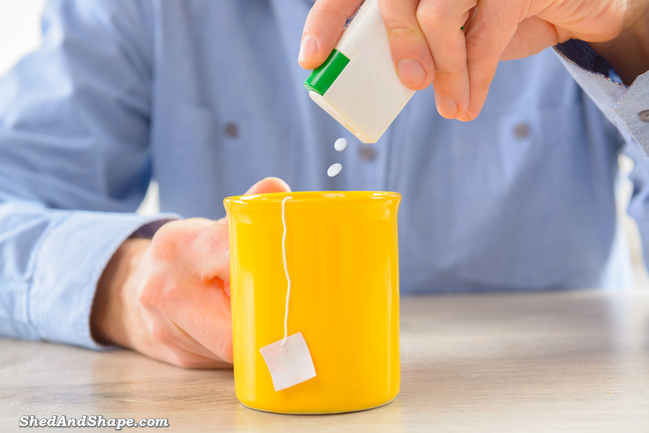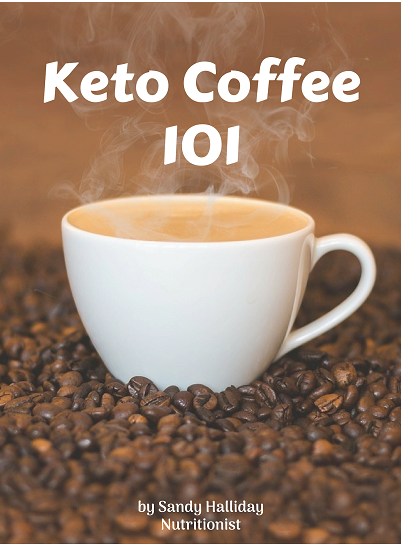I’ve been seeing people talking in online groups about fat fasting as though it’s the next diet du jour. Well let me tell you this is not a diet in the ordinary sense of the word that you can do for any length of time.
Fat fasting is an extreme form of the ketogenic diet that you can follow for 2 – 5 days only in order to achieve fat loss fast especially if you reach a weight loss plateau on the keto diet.
Some of those who have tried it have experienced a decrease in their level of insulin too. When you bring down insulin you increase fat burning.
Others even argue that this technique is much better than the ketogenic diet although it’s not a diet that you should do for more than a few days.
If you’re curious about fat fasting, then read on as we dig deeper into what this fasting technique is all about.
What Is Fat Fasting?
Just like the keto diet, fat fasting is a type of high-fat diet. This means that most of your food intake should come from fats.
But the difference is that this technique is a low-calorie diet and you’re limited to eating only 1,000 to 1,200 calories each day. About 80% of these should come from fats.
Although it’s not technically a type of fasting, the fat fasting diet mimics the body’s biological effects when you abstain from food.
Since most of the food you eat will come from fats, your body will be put into the state of ketosis. This is also what happens to your body when you follow the ketogenic diet.
However, fat fasting is designed to put your body into ketosis faster. If you’re already in ketosis, fat fasting will boost your ketone levels even more.
It does not only restrict your carb intake but also your calories. It’s an effective tool to help you kickstart weight loss if you stall on keto.
If you want to get back into ketosis after a cheat day you can also benefit from fat fasting.
According to the Diet Doctor,
“Fat fasting is a great tool to help you get started with regular fasting and to regain control of your appetite after eating a lot of carbohydrates.”
What To Eat on a Fat Fast?
When going on a fat fast, your diet should consist mainly of the following:
- High-fat fruits like avocados.
- Low carb veggies, such as kale, zucchini, spinach, and other non-starchy vegetables.
- Meats and fish that are loaded with fats, such as fatty streaky bacon, salmon, tuna, sardines, etc.
- High-fat dairy – cream cheese, grass-fed butter, heavy cream, and cheeses.
- Nuts and nut butter, such as macadamia and macadamia nut butter.
- Oils, such as extra virgin olive oil, avocado oil, coconut oil.
- Low-calorie drinks like water, coffee, tea, filtered water or bottled sparkling water
- Whole organic or pastured eggs and especially egg yolks.
Remember that on a fat fast diet, 80 to 90 percent of your daily food intake should come from fats.
The way to manage the calories is to break them up into 4 or 5 meals a day of 200-250 calories each. This mimics the Atkins fat fast which was included in New Diet Revolution.
Sample meals
1-2 Fat Bombs
½ avocado mashed with 1 tablespoon good quality keto mayonnaise
1 oz. macadamia nuts
2 egg yolks with 1 tbsp. good quality keto mayonnaise
2 oz of mackerel, salmon or sardines mashed with 2 tablespoons mayonnaise
2 oz cream cheese
2 tbsp raw coconut oil (I love to eat raw coconut oil by the tablespoonful)
1 oz coconut butter
1 cup coffee with ¼ cup heavy cream
 If you want some more ideas then there is a Fat Fast Cookbook by Dana Carpender with 50 fat fast recipes that will help you jumpstart your weight loss.
If you want some more ideas then there is a Fat Fast Cookbook by Dana Carpender with 50 fat fast recipes that will help you jumpstart your weight loss.
On a keto diet, foods that are rich in protein like chicken, fish, and meat are usually eaten in moderation. However, these foods must be limited when you’re fat fasting since they could significantly increase your calorie intake.
When To Use Fat Fasting?
There are little known studies about the safety and efficacy of fat fasting. It’s low in calories, protein and nutrients essential for health and the effects of using it for more than a few days is unknown.
However, this fasting technique may be able to benefit certain types of people. For instance, those who have been following the keto diet for a while and whose weight loss had plateaued.
In addition, the technique may be useful if you are just about to start the keto diet and wanted to achieve ketosis faster.
Some people will also use fat fasting to go back into the state of ketosis after a day or two of cheating. However, some medical experts believe this is not necessary.
If you’ve had a cheat day while on keto, the best thing to do is to just go back to your usual dietary pattern. Extremely restricting yourself of calories after a cheat day is unnecessary.
Also, people who are following keto for therapy or those under medications might end up putting themselves at risk.
Side Effects and Risks
Just like with the other diet techniques out there, fat fasting also comes with a few side effects and risks. If you have not been following a low carb diet like keto and you immediately get started with fat fast, you could end up experiencing keto flu.
This is a common symptom that people will experience after drastically cutting on carbs. Generally, the keto flu will last for a few days up to a few weeks.
Some of those who have tried the fat fasting have also reported suffering from the following:
- constipation
- diarrhea
- dizziness
- fatigue
- headaches
- nausea
If you’re suffering from certain medical conditions, it is best to avoid fat fasting unless you are under supervision of a practitioner familiar with the technique. Also, pregnant women and those who are breastfeeding should avoid this method of dieting.
Conclusion
The fat fasting technique is a short-term diet that will usually last for 2 to 5 days. During this period, you’re limited to eating only 1,000 – 1,200 calories each day and about 80 to 90 percent of these should come from fats.
The diet is mainly used by those who are on a keto diet and are suffering from weight loss plateau.
As of now, there’s not enough research done on the fat fasting method. It’s not yet known whether it’s safe or effective for everyone.
If you feel like your fat loss has plateaued after going low carb for a while, you can give the fat fasting a try. However, always listen to your body.
If you find yourself suffering from harsh side effects, this method may not work for you. As with starting any type of diet, always consult with your doctor or nutritionist before getting started.










